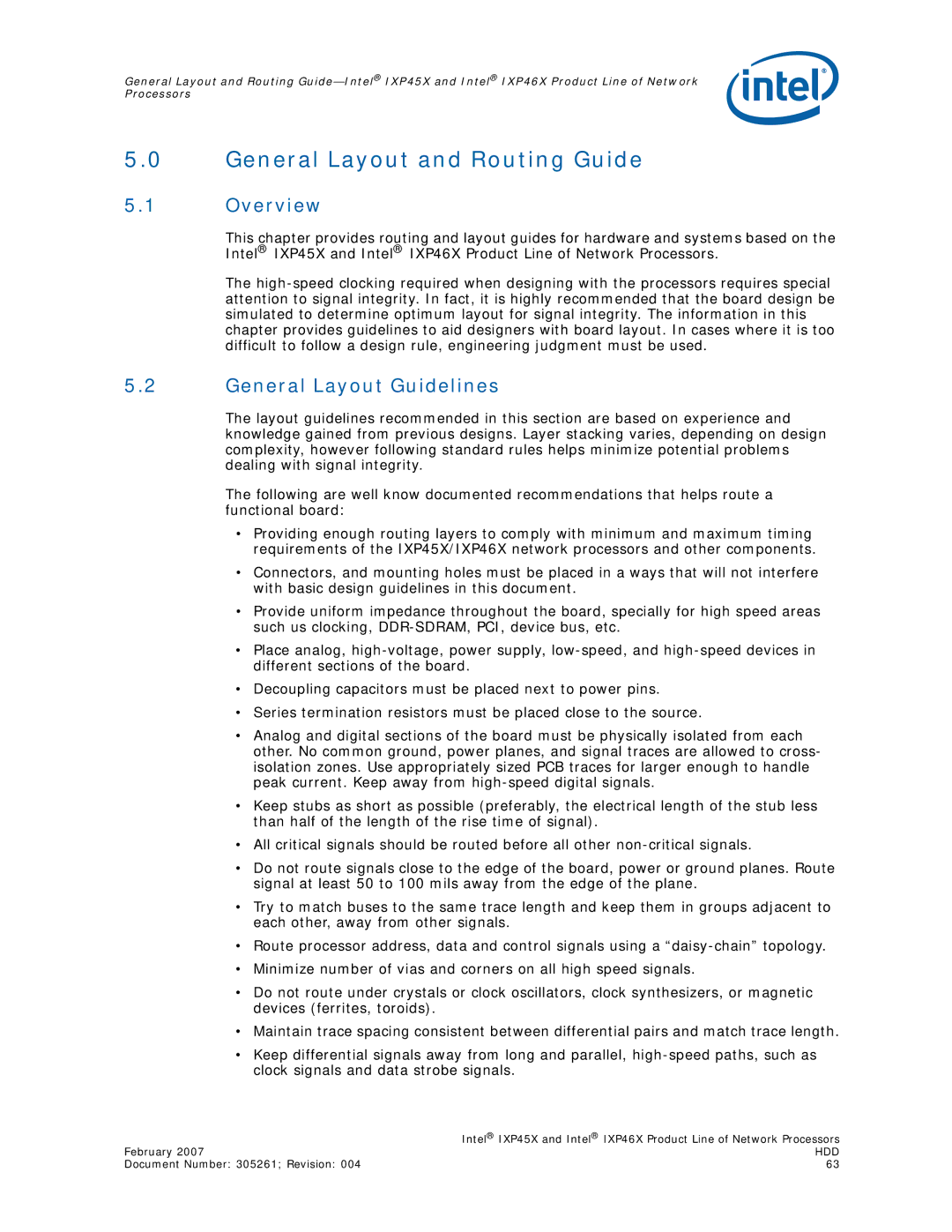
General Layout and Routing
5.0General Layout and Routing Guide
5.1Overview
This chapter provides routing and layout guides for hardware and systems based on the Intel® IXP45X and Intel® IXP46X Product Line of Network Processors.
The
5.2General Layout Guidelines
The layout guidelines recommended in this section are based on experience and knowledge gained from previous designs. Layer stacking varies, depending on design complexity, however following standard rules helps minimize potential problems dealing with signal integrity.
The following are well know documented recommendations that helps route a functional board:
•Providing enough routing layers to comply with minimum and maximum timing requirements of the IXP45X/IXP46X network processors and other components.
•Connectors, and mounting holes must be placed in a ways that will not interfere with basic design guidelines in this document.
•Provide uniform impedance throughout the board, specially for high speed areas such us clocking,
•Place analog,
•Decoupling capacitors must be placed next to power pins.
•Series termination resistors must be placed close to the source.
•Analog and digital sections of the board must be physically isolated from each other. No common ground, power planes, and signal traces are allowed to cross- isolation zones. Use appropriately sized PCB traces for larger enough to handle peak current. Keep away from
•Keep stubs as short as possible (preferably, the electrical length of the stub less than half of the length of the rise time of signal).
•All critical signals should be routed before all other
•Do not route signals close to the edge of the board, power or ground planes. Route signal at least 50 to 100 mils away from the edge of the plane.
•Try to match buses to the same trace length and keep them in groups adjacent to each other, away from other signals.
•Route processor address, data and control signals using a
•Minimize number of vias and corners on all high speed signals.
•Do not route under crystals or clock oscillators, clock synthesizers, or magnetic devices (ferrites, toroids).
•Maintain trace spacing consistent between differential pairs and match trace length.
•Keep differential signals away from long and parallel,
| Intel® IXP45X and Intel® IXP46X Product Line of Network Processors |
February 2007 | HDD |
Document Number: 305261; Revision: 004 | 63 |
